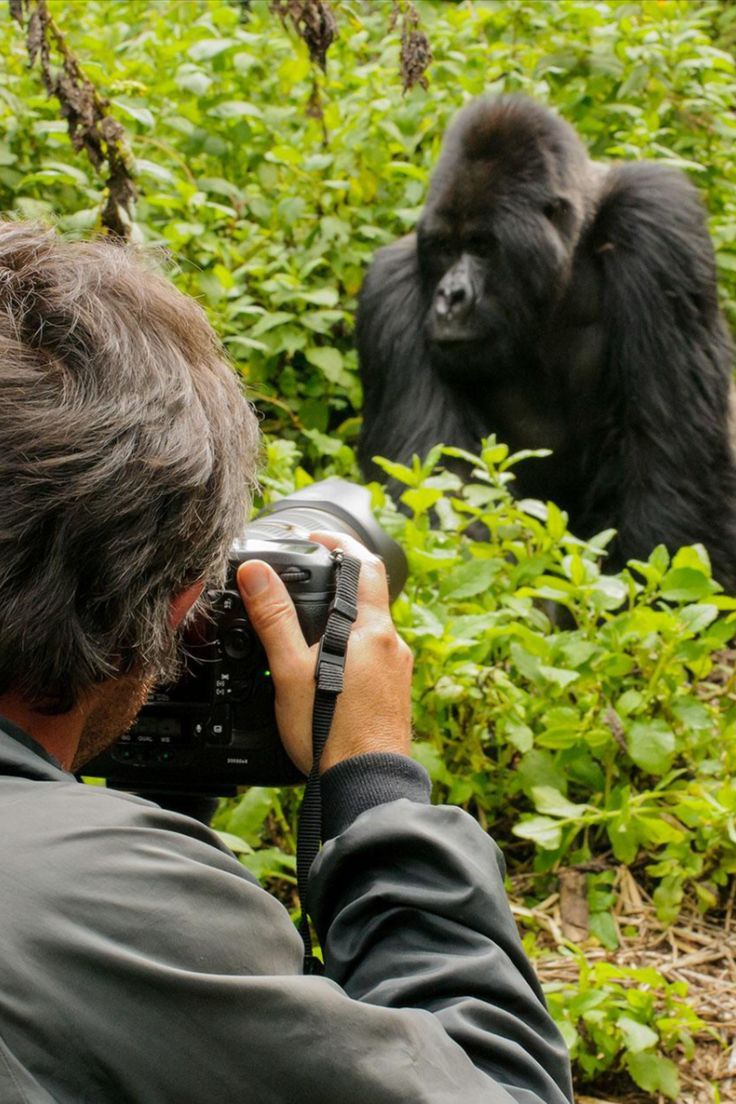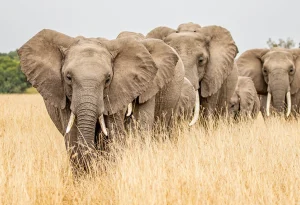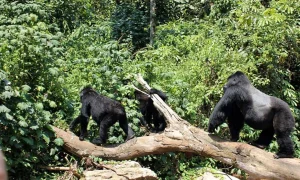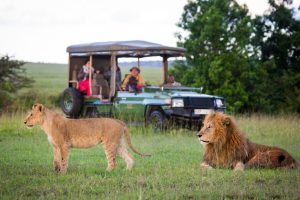Is it safe to visit gorillas in Uganda?
Is it safe to visit gorillas in Uganda? Gorilla trekking in Uganda is a safe activity, with the Uganda Wildlife Authority and conservation organizations implementing measures to ensure visitor safety. Following guides’ instructions and following their guidance is crucial for a successful gorilla trek.
In southwestern Uganda, Bwindi Impenetrable National Park and Mgahinga Gorilla National Park are home to small populations of endangered mountain gorillas. There are only 1000 or so mountain gorillas left in the wild today, and over half of them are found in these two forests of Uganda.
Tracking the mountains gorillas in Uganda is a once in a lifetime experience – and all reasonable precautions are taken to ensure visitor safety. You will track the gorillas with expert field guides. These guides have been tracking gorillas for decades, and know the forests like the back of their hand. As you hike through the thick forest, you’ll be searching for clues left behind from the gorillas – it can sometimes take many hours before you find a group, but it’s rare that people leave the forest without making contact with these incredible animals.
However, it’s important to note that conditions can change over time, and staying updated on the current situation is always advisable before planning your gorilla tour.
In this comprehensive guide, we’ll delve into the safety aspects of gorilla trekking in Uganda. We will address your concerns about the dangers of trekking gorillas in Uganda, and how to ensure a secure and memorable experience. So, let’s explore whether Uganda gorilla trekking is dangerous or safe and what you need to know to make your gorilla tour a success.
Uganda Gorilla Trekking Safety Measures
Uganda, often referred to as the “Pearl of Africa,” is renowned for its incredible biodiversity and stunning landscapes. Among its most celebrated inhabitants are the endangered mountain gorillas that inhabit the lush forests of Bwindi Impenetrable National Park and Mgahinga Gorilla National Park. Trekking to see these majestic creatures in their natural habitat is a dream for many travelers. But is it safe?
Permits and Regulations
Uganda’s Uganda Wildlife Authority (UWA) regulates gorilla trekking to minimize disturbance, protect endangered populations, and enhance the forest experience. Permits are issued daily, ensuring unique and special gorilla encounters.
Experienced Guides
When on a gorilla trek in Uganda, you can rest assured, knowing that your safety is the top priority. Every trekking group is accompanied by experienced guides who are certified by reputable Gorilla trekking involves experienced guides who play a crucial role in ensuring safety and communication with the gorilla group. They navigate local terrain, observe gorilla behavior, and provide valuable insights into the environment, fostering an immersive experience and a newfound appreciation for the natural world.
Briefing Sessions
Before going on your gorilla trek, you’ll attend a mandatory briefing session at the visitor center. During this session, you’ll learn about the potential risks of gorilla trekking and how to mitigate them. You’ll receive important safety information, such as maintaining a safe distance from the gorillas and not making direct eye contact. The session is designed to help you stay safe, respect the gorilla sanctuary, and guide you during gorilla trekking. We encourage you to ask questions and take the information seriously. Remember, gorilla trekking is a unique and unforgettable experience that requires caution and respect.
Group Size
Gorilla trekking groups are intentionally kept small, usually with a maximum of eight tourists, two rangers, and one expert tracking guide. This provides a more intimate and less disruptive experience, making it easier for rangers to ensure the safety of all participants during the gorilla trek.
Tracking Teams
Gorilla tracking teams are equipped and ready to assist in any emergency that may arise during the trek. Whether it’s an injury, an illness, adverse weather conditions, or any other unexpected event, UWA’s ranger teams are trained to handle it. The rangers have extensive training and experience, and they carry the necessary equipment and follow specific protocols to ensure that everyone is safe when they visit gorillas in Uganda.
We recommend that you prepare adequately before going for the gorilla trek. Ensure you have the recommended gear, are physically fit, and have undergone any necessary training or education. By taking the necessary steps beforehand, you’ll have a safe and enjoyable gorilla trekking experience.
Physical Fitness
Gorilla trekking is an exciting adventure that doesn’t necessarily require extreme physical fitness. However, it involves hiking through dense forests and steep terrain, which can be challenging. Therefore, ensuring you’re physically prepared for the gorilla trek is crucial, as this can significantly contribute to your safety. If you have any medical concerns, it’s advisable to consult with a doctor before embarking on the journey.
To prepare for the gorilla trek, engage in regular cardio exercises, practice hiking on steep terrain, and wear appropriate footwear. Also, it’s crucial to be mentally prepared for the length of the hike and the elevation gain.
By taking these necessary fitness steps, you’ll be well-prepared to embark on a safe and enjoyable gorilla trekking experience in Uganda.
Health Precautions
As a safety precaution, it is mandatory for tourists to wear face masks and maintain a safe distance from gorillas while trekking. This is crucial to prevent the transmission of any potential diseases, especially considering the vulnerability of gorillas to human-borne illnesses. Additionally, if you exhibit symptoms of a contagious disease, such as a high temperature, coughing, or flu, you will not be allowed to join the trek.
General Safety Tips for Visiting Gorillas in Uganda
Apart from the measures put in place by authorities, here are some general safety tips to keep in mind:
- Travel Insurance: Always have comprehensive travel insurance that covers medical emergencies and evacuations. This is a crucial safety net in case of unforeseen circumstances.
- Vaccinations and Health Preparations: Consult a travel health specialist to ensure you have the necessary vaccinations and medications for your trip. Malaria is prevalent in Uganda, so taking antimalarial precautions is essential.
- Respect the Environment: To ensure the safety and preservation of the gorillas and their habitat, adhere to all environmental guidelines. Do not litter, and follow the “Leave No Trace” principles.
- Pack Wisely: Pack appropriate clothing for varying weather conditions, including rain gear, sturdy hiking boots, and warm layers. Also, bring essential items such as a first-aid kit, insect repellent, and sunscreen.
- Listen to Your Guide: Your trekking guide is your best source of information and safety. Always follow their instructions and guidance.
- Obtain necessary permits: Gorilla trekking requires a permit, and it’s essential to obtain it from the appropriate authority, such as the Ugandan Wildlife Authority (UWA). Ensure the permits are genuine and acquired through authorized channels.
- Use a reputable tour operator: Choose a reputable tour operator or travel agency that specializes in gorilla trekking. They will have experienced guides who are knowledgeable about the area and can ensure your safety during the trek.
- Carry necessary supplies: Bring essentials such as water, snacks, sunscreen, a hat, and a camera (without flash). However, make sure to minimize your impact on the environment and wildlife by not leaving any litter behind.




